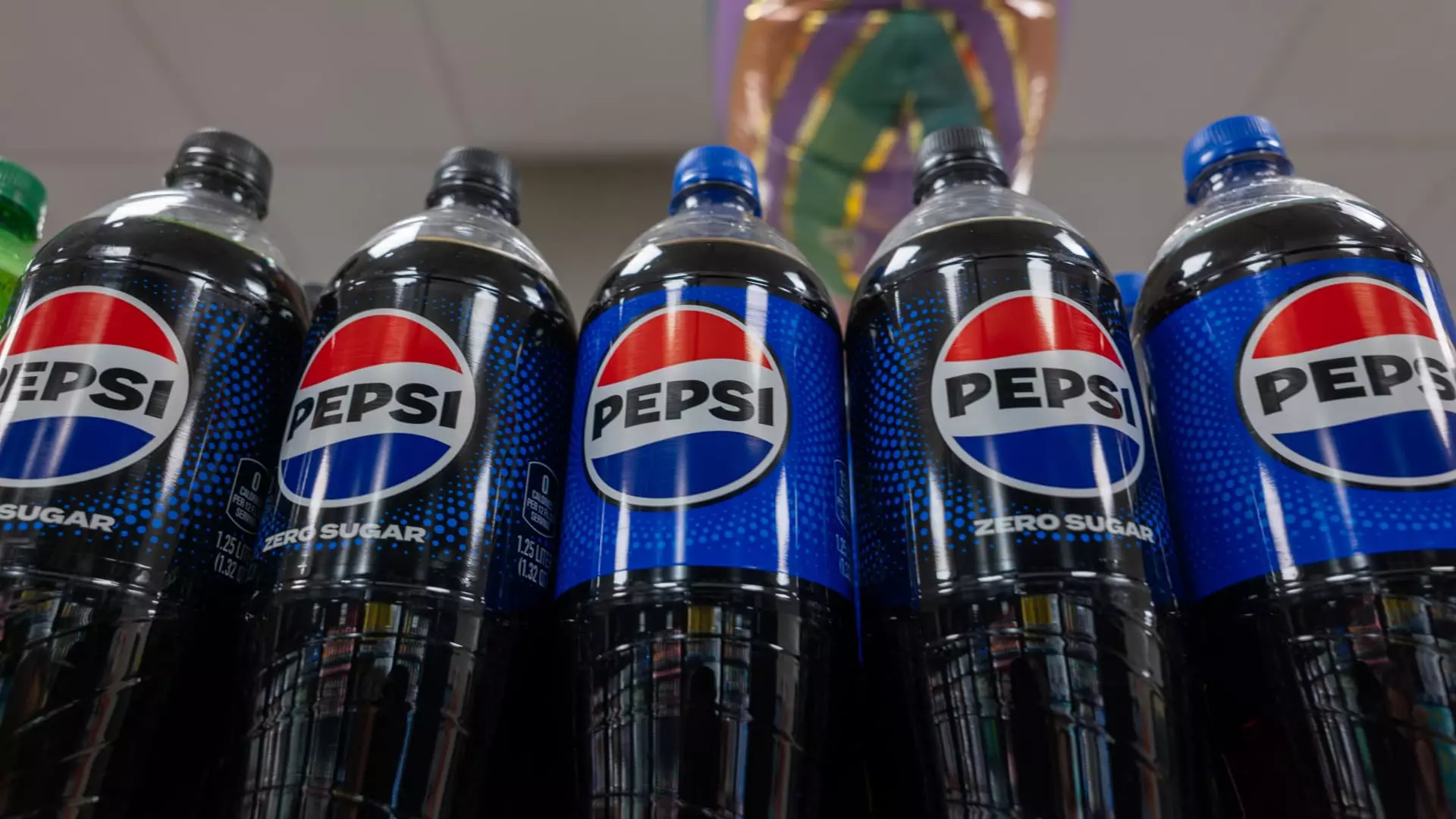PepsiCo recently unveiled its latest quarterly results, revealing a company at a crossroads. While international sales provided a cushion, they were not enough to mask the disturbing decline in North American demand. The reported figures, while showing some positives, are also littered with red flags that investors should not ignore. As CEO Ramon Laguarta succinctly puts it, “We expect more volatility and uncertainty.” Such phrases are hardly comforting coming from the head of a multi-billion-dollar corporation, especially when they foreshadow a tumultuous journey ahead.
The numbers themselves present a somewhat contradictory picture: earnings per share slightly missed expectations at $1.48 compared to the anticipated $1.49, while revenues exceeded projections at $17.92 billion. On paper, it might seem that PepsiCo is faring well; however, peeling back the layers reveals a company grappling with erosion in net income and a worrying drop in net sales—a decline of 1.8%. This financial backdrop, juxtaposed against a resilient global economy and consumer behavior shifts, suggests that PepsiCo is not merely facing external pressures but rather dealing with deeper structural challenges.
Economic Strain and Consumer Caution
The reasons for this decline are multifaceted and complex. Economic volatility is not just a buzzword; it starkly impacts purchasing power and consumer behavior. As inflation continues to chip away at disposable income, consumers are behaving more cautiously. This “value-consciousness” leaves little room for premium purchases, affecting sales across brands and categories. The reality is that when consumers are forced to stretch every dollar, big-box brands like PepsiCo find themselves at a disadvantage compared to smaller, niche players that can offer perceived value without straying into higher price ranges.
Furthermore, the ongoing issue of tariffs complicates the landscape even further for the food and beverage titan. With rising supply chain costs, stemming from geopolitical tensions and trade wars, PepsiCo may find it increasingly difficult to maintain competitive prices in its home market. Such challenges compel the company to rethink its strategy—an undertaking that is easier said than done.
Strategic Shifts in Response to Stagnation
PepsiCo is seemingly aware of its current predicament and is attempting to recalibrate its North American strategy to confront these challenges head-on. The company has acknowledged the necessity of tapping into multicultural and functional products, with expansions into brands like Simply, Sabra, and Siete. Recent acquisitions, such as Poppi, a prebiotic soda brand, signify potential paths towards innovation, though they may not bring immediate relief to its faltering core business.
Still, regardless of strategic maneuvers, one must question whether these are sufficient to shift the prevailing narrative. Reports indicate that even with a focused intention to enhance product availability, the North American beverage unit continues to grapple with consumer volume declines of 3%. The oversight in adapting to changing consumer preferences could hamper endeavors aimed at broadening market share.
The Bright Spots: A Necessity for Hope Amidst Gloom
In an otherwise alarming situation, there are glimmers of hope within PepsiCo’s product lineup. Pepsi Zero Sugar has proven to be a resilient contender, gaining market share even amidst broader category declines. Additionally, snacks like Miss Vickie’s chips and Quaker’s rice cakes have shown promise in revenue growth, suggesting that not all is lost within specific segments of the portfolio.
However, these bright spots are precisely that—small elements of positivity in an otherwise overwhelming sea of challenges. They hint at potential operational strengths that the company can enhance but do not alter the overall sobering outlook. To navigate this uncertain terrain, a paradigm shift in consumer engagement and product innovation must occur without delay.
PepsiCo’s recent challenges indicate a company struggling to adapt within a changing industry landscape. The performance may appear stable on certain fronts, but the underlying turbulence raises serious concerns for investors. The food and beverage giant must tighten its grip on consumer behaviors, preferences, and the economic realities affecting them before it can steer the ship back to smoother waters.

